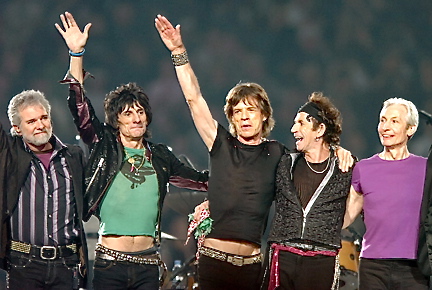Rolling Stones' keyboardist gets his satisfaction on the farm

You probably know Chuck Leavell as the keyboardist for the Rolling Stones. But you probably don’t know that in the world of tree farming, Leavell, 56, is big-time. He is also co-founder and director of environmental affairs at The Mother Nature Network, which launched last year. I called Leavell recently at Charlane Plantation, his farm just south of Macon, Ga.
What does a tree farmer do?
They manage what we term family forests—folks who have a plot of land, from 10 acres up to what Rose Lane and I have, which is 2,500 acres. It’s taking a very long-term view of the land--sustainable forest management. Everything has a life cycle, including trees. We all love using the wonderful forest products, but we have to manage that, keeping in mind what’s within the forest—the songbirds, the wildlife. Every forest is different
So what’s involved in managing?
It’s seasonal. In the south, you plant in the cold months, from December through February, putting seedlings in the ground. This time of year I’m just wrapping up prescribed burns. Native Americans used to do this long before we came on these stores. You use it to clean out the understory; to encourage natural legumes and weeds; and to discourage certain woody growths that are competing with the forest and not very helpful to wildlife. At certain points in time you might want to prune trees. We do the harvesting in the hot months down here.
 Explain how you decide when to harvest.
Explain how you decide when to harvest.
Every person or entity engaged in forests will have different view. Let’s say we plant a forest today. You put some Southern Yellow Pine in the ground, which is on a 60 to 70-year rotation. After about 15 years you go in and thin out the forest. It’s like weeding a garden. Then in another seven to 10 years you do a second thinning. Eventually you come to that point in time, and you do a final harvest and start the process over. That’s called even-aged management. We do uneven-aged management, so we take some mature trees out and let younger ones stand.
How many trees do you have?
These days when we plant seedlings, we plant on the order of about 600 trees per acre. So you calculate that, and factor in for taking some out.
What’s the thing you want everyone to understand about trees?
It’s important for people to understand that trees are a natural, organic and renewable resource and a remarkable resource. It’s amazing what we get from our forests, and people don’t really think about it. Sure, we get lumber—materials to make schools, churches, homes, books, magazines—but it’s also home and shelter to all wildlife. We use trees in so many ways. The cellulose, for instance, goes into everything from tires to chewing gum to salad dressing. We just have to manage the trees properly. They don’t manage themselves.

All this talk about trees and forests and nature sounds very peaceful and serene--and not very compatible with touring with the Rolling Stones, which you’ve been doing since 1982.
It provides an incredible balance for me. You go on tour, and you’re in big cities, with large crowds, electric atmosphere. When I come home to Charlane Plantation and can walk in the woods and hear the wind in the pines instead of honking horns, it’s a wonderful balance. I love the physical work. You’re out there pruning trees, using muscles you didn’t know you had. It’s a wonderful ethic of work to get out there and harmonize with nature, to know you’re helping the deer, quail, turkey. We even have black bears.
What’s your playing schedule when you’re not on tour?
The Stones haven’t toured since August ’07. In the off-time, I stay active musically, do some recording in Nashville from time to time and do projects of my own. I’ll book a show once or twice a month, and there’s a band I work with locally. I’m working on a new CD now, which is a tribute to pioneering piano players.
Do you write music about trees?
Not so much specifically, but sometimes riding through the woods you get ideas for a melody. I‘m not so much of a lyricist. Every time I try to write something it looks kind of silly, so I leave that to those who do it well. But I do get ideas from certain sounds in the forests. And I am writing a new book now on sustainable growth, trying to point out good examples of sustainable growth communities that are wisely thought out and put together and preserve surrounding areas.
 What will you be doing to celebrate the 40th anniversary of Earth Day?
What will you be doing to celebrate the 40th anniversary of Earth Day?
I will be in New York City. We have a great event with The MNN, in conjunction with Yale University and the New York Stock Exchange. It’s an all-day conference with [Fortune 500] CEOs talking about what they are doing to be more sustainable. We want our businesses to thrive, but we want them to understand their carbon footprint. I’m going to perform [on the stock exchange floor]. (Click here for Leavell’s Earth Day playlist, including Woody Guthrie’s This Land is Your Land, Bo Diddley’s Pollution and Roger Mcguinn’s The Trees Are All Gone.)
My all-time favorite tree book is The Giving Tree. What’s yours?
Oh man, Shel Silverstein. That really tells the story. I would agree, that’s at the top of my list. A contemporary book to add to the list is Lives of the Trees: An Uncommon Historyby Diana Wells.
This post was originally published on Smartplanet.com
